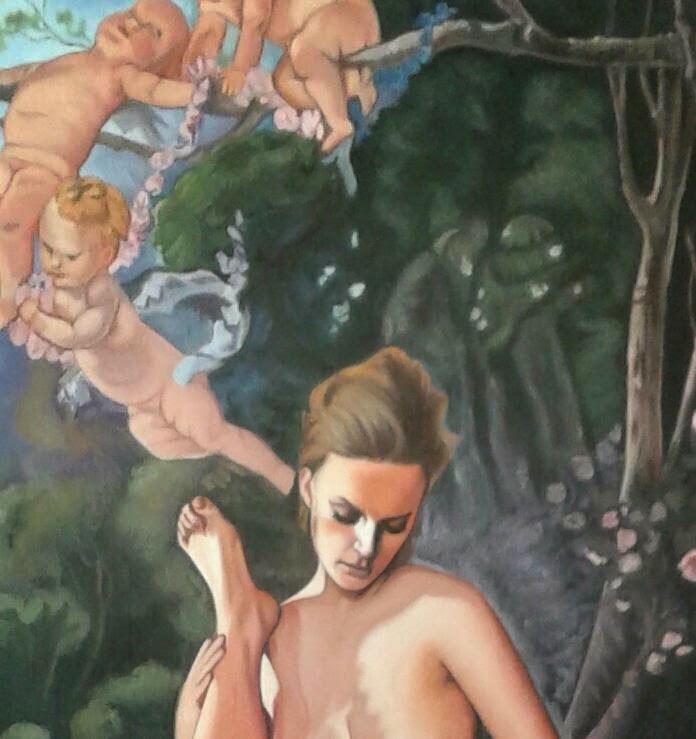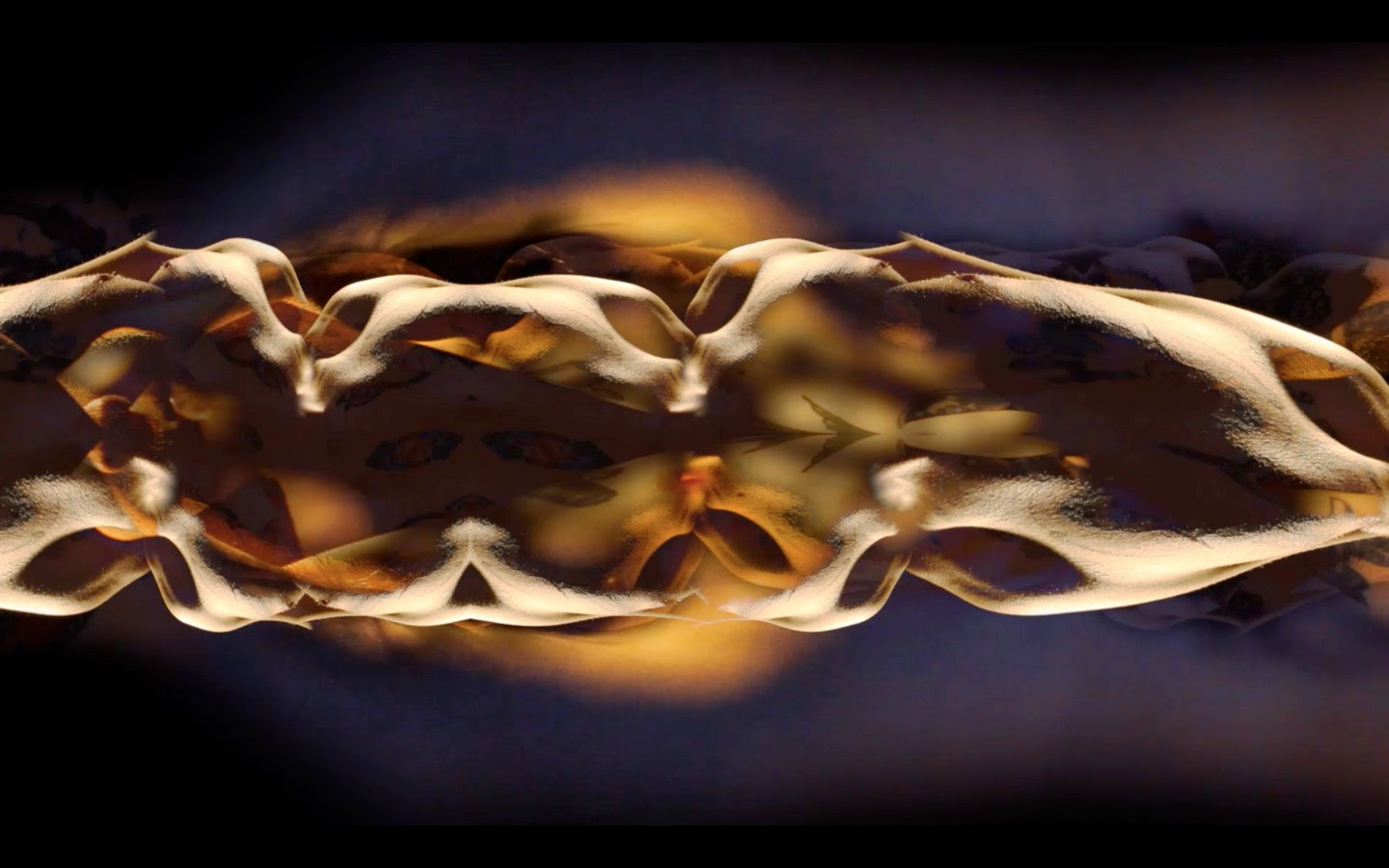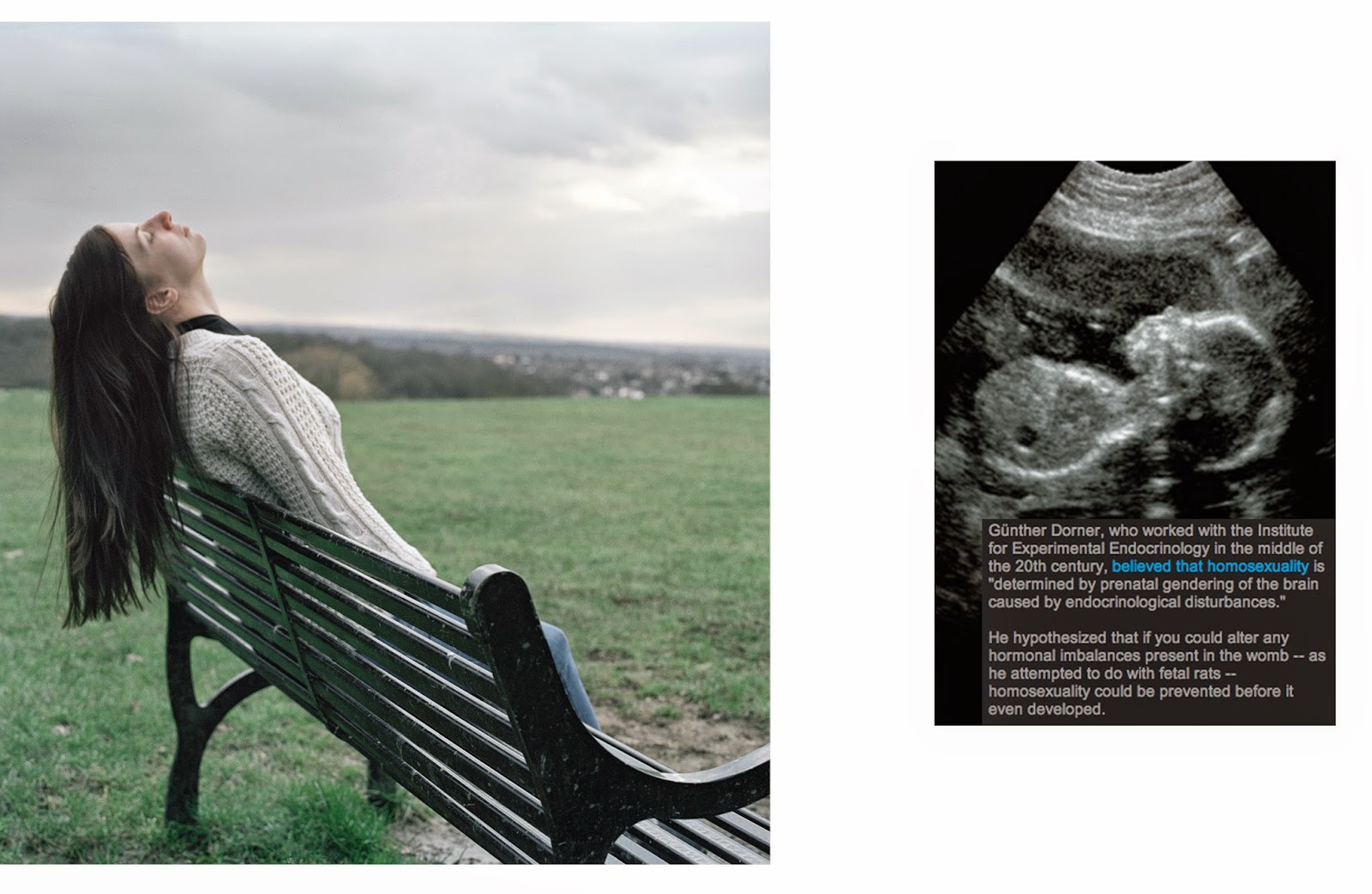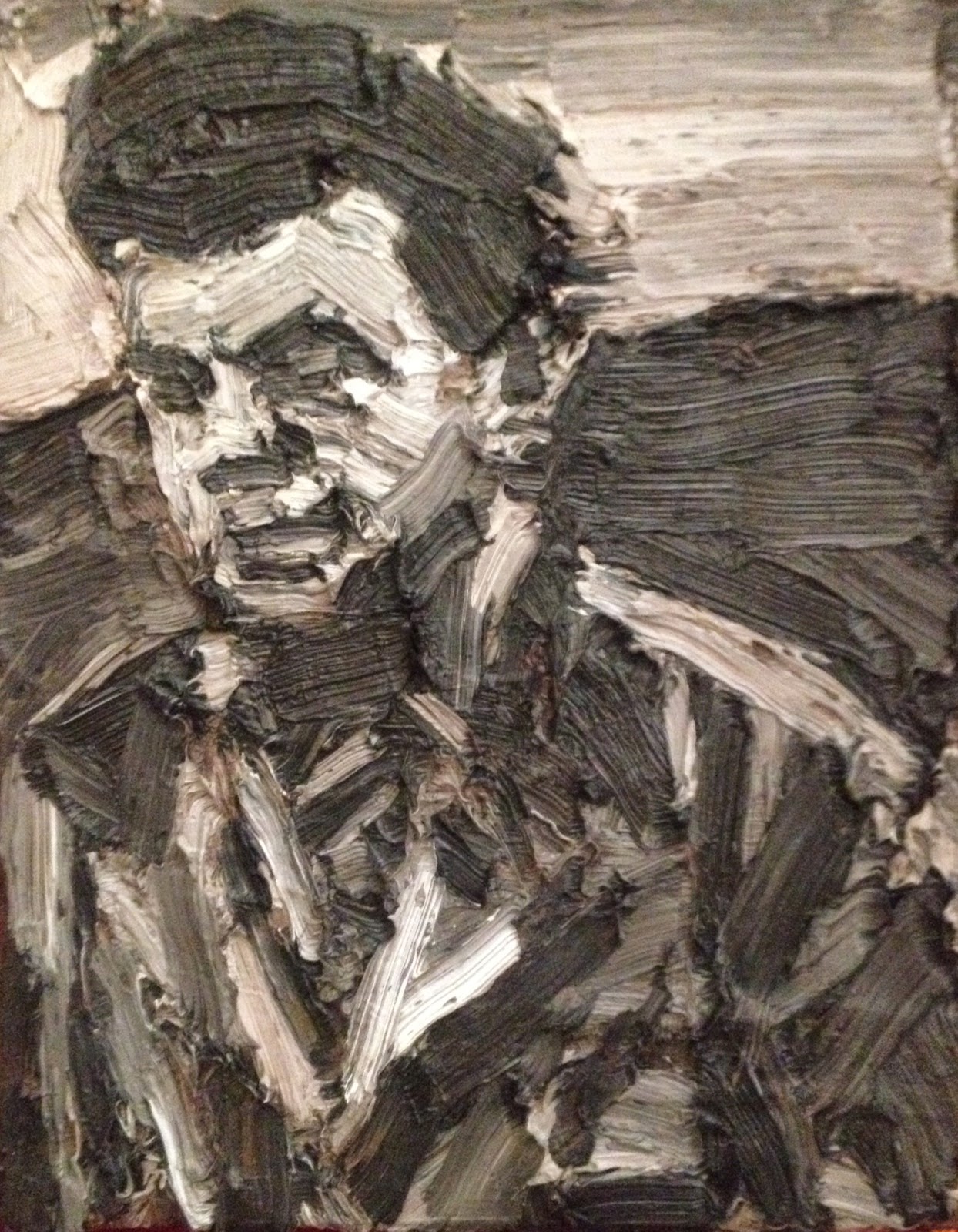Myths and Mythologies:
Urban Myths
GFEST Gaywise
FESTival Visual Arts Exhibition 2014
Menier Galler, 51 Southwark Street London,
SE1 1RU
10-22 November 2014
Launch evening, 11 November 6- 8 pm
(by invite only)
Featuring SADIE LEE, MATTHEW STRADLING, JOAO TRINDADE, JENNY WELTON,
MATHIAS VEF, GÖKHAN TANRIÖVER AND ENZO MARRA
According to Helen Morales, a Cambridge University academic
specialising in mythology, scholars have produced as many definitions of myth
as there are myths themselves. For her, a myth is as much about process as it is a thing.[1] It is
‘a continual process of telling and retelling.’[2]
Rudolf Bultmann suggests that the real purpose of myth is not to present an
objective picture of the world as it is, but to express man’s understanding of
himself in the world in which he lives.[3]
Indeed, the bare narrative is only part of what makes a myth a myth. The
ancient Greeks had a collective psychological and religious investment in their
stories.[4] In
more recent times, Freud, for one, was fascinated by myths and sought long and
hard to account for their power. Morales goes so far as to claim that without
classical mythology, there would be no psychoanalysis, and this is not too bold
a claim, since much of Freud’s work is based on his interpretation of the Oedipal
myth (amongst others).[5] Freud
saw psychoanalysis, like myth, as driven by an inexorable movement towards
truth, a means to discover, explain and understand oneself.[6] For
him, myths were case studies from which to draw conclusions about men’s
universal experiences.[7] As
attempts to understand and define the self, myths play a particularly important
role when it comes to anyone who sees him- or herself as different from the
‘Other’. It is unsurprising, therefore, that they play an especially pertinent
role within the LGBTQI community.

One prevalent mythological tradition is the oral – or,
nowadays, written – form, deriving from the early tradition of story telling.
Another, however, is the visual. Western art history is full of scenes from classical
mythology, Christian religion and pagan folklore. Take, for example, Titian’s group
of large-scale mythologies inspired by the Roman poet Ovid’s Metamorphoses, painted for King Philip
II of Spain between 1556 and 1559. And what about Correggio’s Danaë from 1531 or the various
representations of the Rape of the Sabine Women by Giambologna (1579-83),
Poussin (1634-35 and 1636-37), Rubens (1635-40) and Picasso (1962-63)? Depictions
of scenes of mythological rape, or of the foreplay leading up to the act, have
long been an apparently licit way to portray erotic scenes and the enjoyment of
sexual activity.
Looking through a queer lens, there are numerous characters
and motifs from mythology that have acquired extra levels of meaning through
artistic representations. The myth of Jupiter and Ganymede is an iconic gay
story, hugely popular in Roman art and literature, as is the myth of Apollo’s
love for Hyacinthus. Exemplary for female same-sex desire are Iphis and Ianthe
from Ovid’s Metamorphoses, although
Ianthe does believe Iphis to be a boy, so gender is somewhat blurred here. Of
course, the myth of Hermaphroditus opens up gender binaries altogether.
This year’s GFEST Gaywise FESTival – now in its seventh year
– has taken this vast playing field of myths and mythologies as the theme for
its visual arts exhibition at the Menier Gallery. With three commissioned
artists and four further participating artists – international and at differing
stages of their careers – the responses have been as varied as they have
carefully thought out, serving to support Morales’ opening gambit about the
myriad of possible interpretation.

Matthew Stradling perhaps toes a line closest to the story
thus far, with his contemporary – and queer – renderings of three traditional
art historical subjects: Lucretia, St Sebastian and the Dying Slave. What
Stradling takes from the myth of Lucretia – raped by Tarquin, son of the last
king of Rome, an act which ultimately leads to her suicide – is the idea of
shame, especially as a converse to pride, and the question of why so many
images of gay men have been images of suffering. In his painting, he places
himself as Lucretia, who, shown baring her breasts, is both pained and
suffering, but sexual at the same time. Her pearl necklace is a symbol of
femininity, as well as of sexuality. A central element to Stradling’s works is
the idea of power play. Michelangelo’s Dying Slave is shown in urine-stained
underpants with ‘thank you’ stitched on the band – thank you for making me
submissive, the artist explains. Similarly, St Sebastian, the adored object and
penetrated and passive male – claimed for the gay world by Derek Jarman’s 1976
film Sebastiane – is depicted by
Stradling with an erection, forcing the question: what does it mean to be
passive? In an SM world, mightn’t the myths of suffering and shame actually be
turned on their heads?

Sadie Lee also works with art history, but has chosen just
one artist, the 18th century Rococo painter François Boucher
(1703-1770), of whom she has created four pastiches, challenging myths of
female sexuality in the process. Her confrontational works, which subvert
Boucher’s idealistic scenarios with women in a pastoral landscape, lying
together, with Cupid and his cherubs overhead, are sensually arousing and
erotic in a way that the originals never could be. In place of Boucher’s
voluptuous goddesses, Lee introduces real women from vintage 1970s porn
magazines, engaging in explicit acts of lesbian sex. This element of kink,
building on a personal interest in pornography, has been described as an I Modi for the iPhone generation. By
expressing the subject’s genuine pleasure, Lee introduces an important – and
previously absent – element to her versions of these images: empathy with the
model. Her ‘borrowing’ of imagery of sex workers also raises concerns about the
status and role of the models used in past times.

The third commissioned artist, João Trindade, works in
quite a different manner. His medium is photography and, rather than looking at
classical myths, he draws on the myths we build up about ourselves and other
people every day of our lives, putting each other into boxes and creating
barriers. He looks at judgment and prejudice and how to overcome these in order
to create a space where love and communication can flourish. Building on a
personal story, he has worked with a transgender model and created sculptural mannequins
out of wire and mesh and photographed them in positions suggesting manipulation
and puppetry. He deliberately seeks to make his photographic work look naïve, reinforcing
the idea of myths as elementary means of exploring and uncovering our
identities, as psychological case studies, and as tales of becoming. As Freud’s
colleague Otto Rank phrases it: ‘Myths are, therefore, created by adults, by
means of retrograde childhood fantasies, the hero being credited with the
myth-maker’s personal infantile history.’[8]

Mathias Vef also works with photography – as well as
film – to explore myths from a psychological angle. He sees myths as common
narratives, often unverifiable, but important elements of all cultures,
especially subcultures. Furthermore, he sees them as both a form of collective
unconscious within the (sub-)culture and as means of connecting (sub-)cultures
with the mainstream. That is, he notes that stories of LGBTQI life do creep
into straight culture, but that somehow they always remain mysterious and
other, almost sacred or mystic. Vef is interested in what he terms ‘a
contemporary, new or future mythology; myths in formation’. Transcendent
narratives inspire his atmospheric work, as he speculates about ‘the aesthetics
of mythology’, working out a personification of forces and archetypes. ‘Myths to
me,’ he says, ‘are a kind of psycho-genetic bond throughout generations […] Maybe
like Carl Jung who spoke of universal archetypes that are expressed in
mythology.’ His video work, I Do Me,
was inspired by body modification which he sees as a pure manifestation of the
will, an embodiment of mythopeic thought.

Jenny Welton’s series of work, Dark Paradise (2013),
is also photographic and takes as its starting point the myth that
homosexuality can be cured. Drawing upon personal experience, Welton surveys
various claims of cure, past and present, actual and fictitious. Her surreal
images are accompanied by newspaper and textbook cuttings and propaganda-style
quotations.

Gökhan Tanriover’s work brings a contemporary
psychological take to the classical myth of Narcissus, using it as a starting
point to explore issues of body image and dysmorphia. Radical myths about how
we should look are proliferated by the media and are known to
disproportionately affect the LGBTQI community. A former doctor and current
photography student, Tanriover is fascinated by the motion and distortion that
water can cause on subjects behind the lens. The technique he has used for this
series incorporates water and glass to cause partial distortion of his
subjects, reflecting the bias we have against our own bodies. The water and use
of reflections on glass also recall the story of Narcissus, something with a
personal element for Tanriover, who used to spend his summer holidays at hisgrandparent’s country house in
Turkey, within walking distance of a small creek, said to be the body of water in
which Narcissus drowned.

Finally, returning to the medium of paint, Enzo Marra creates texture by dragging away and building up pigment in his depictions of
Francis Bacon, an artist whom he considers to have become a mythic figure and
an embodiment of the concept of ‘gay artist’. Describing him as ‘larger than
life’, one might wonder, is this icon a myth towards which Marra – and indeed
the other artists at GFEST – aspire, or one from which they learn and move
away? And how much verity can be attributed to this myth? How much of it is a
skewed representation of a figurehead by outsider eyes, prejudiced and
judgmental, putting people into boxes, just as Trinidade has highlighted?
Echoing Marra’s own words, Morales concludes:
‘What makes someone mythic is not whether or not he lived,
or lived well, but whether or not he was larger than life. Mythic heroes were –
and are – outrageous and outstanding. They are phenomenal. They distil some
collective ideal or fantasy.’[9]
As celebrators of LGBTQI identity and culture, all artists –
and no doubt visitors – participating in GFEST certainly tick these boxes. If
myth is a process, an evolving tale, let us come together now to change the
future versions that are told.
[1] Helen Morales, Classical Mythology: A Very Short Introduction (Oxford: Oxford
University Press: 2007), p.2
[2] Morales (2007), p.115
[3] Rudolf Bultmann, ‘New Testament and Mythology’
(1941) in Kerygma and Myth, ed.
Hans-Werner Bartsch, tr. Reginald H. Fuller (London: SPCK, 1953), p.10
[4] Morales (2007), p.31
[5] Morales (2007), p.69
[6] Morales (2007), p.71
[7] Morales (2007), p.74
[8] Otto Rank, ‘The Myth of the Birth of the
Hero’ (1914) (reprinted) in In Quest of
the Hero, ed. Rank et al. (Princeton, N.J.: Princeton University Press,
1990), pp.3-86, p.71
[9]Morales (2007), p.55
All images © the artists
[some are unfinished details]